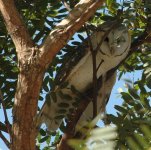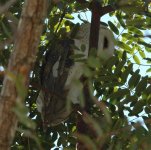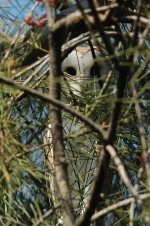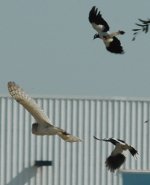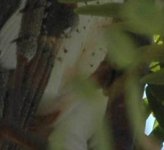Laurie Knight
Well-known member
G'day
I came across the following tyto at the viewing area near the end of the runway. There was a commotion which lead to this poor chap being flushed from the tree it was roosting in. It was harassed by a mixed flock of magpies, butcherbirds, noisy miners and peewees. At one stage, a butcherbird was yanking on it's primaries.
I believe that the spindly legs (image 133) mean that it is unlikely to be a male pale morph Masked Owl. On balance, I think it is more likely to be a Barn Owl than a Grass Owl (do Grass Owls roost in trees away from long grass?)
I would be interested in people's opinions regarding the bird, including its age and gender.
Regards, Laurie.
I came across the following tyto at the viewing area near the end of the runway. There was a commotion which lead to this poor chap being flushed from the tree it was roosting in. It was harassed by a mixed flock of magpies, butcherbirds, noisy miners and peewees. At one stage, a butcherbird was yanking on it's primaries.
I believe that the spindly legs (image 133) mean that it is unlikely to be a male pale morph Masked Owl. On balance, I think it is more likely to be a Barn Owl than a Grass Owl (do Grass Owls roost in trees away from long grass?)
I would be interested in people's opinions regarding the bird, including its age and gender.
Regards, Laurie.




